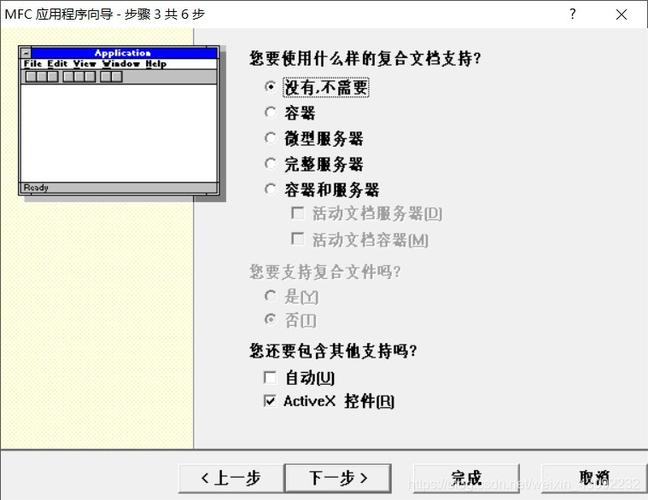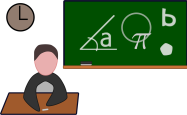mfc编程步骤
Title: Introduction to MFC Programming
What is MFC?
Microsoft Foundation Classes (MFC) is a C framework developed by Microsoft for building Windowsbased applications. It provides a set of classes for creating graphical user interfaces (GUIs), handling messages, and managing resources. MFC simplifies the process of developing Windows applications by providing prebuilt components and abstractions for common tasks.
Key Components of MFC:
1.
CObject:
The base class for most MFC classes. It provides features like runtime class information and dynamic object creation.2.
CWnd:
Represents a window in a Windows application. It encapsulates the functionality of a window, including handling messages and drawing.3.
CWinApp:
Represents the application itself. It initializes the application, processes messages, and provides a framework for managing resources.4.
CFrameWnd:
Represents a frame window, which typically contains menus, toolbars, and other controls. It serves as the main window for the application.5.
CView:
Represents a view within a frame window. It displays the content of the application and handles user interaction.6.
CDialog:
Represents a dialog box, which is a window that displays controls for user input. Dialogs are commonly used for settings, preferences, and other forms.Basic Steps in MFC Programming:
1.
Create a New MFC Project:
Start by creating a new MFC project in Visual Studio or another IDE that supports MFC development.2.
Design the User Interface:
Use the resource editor to design the user interface of your application. You can add controls such as buttons, text boxes, and list boxes to create the desired layout.3.
Write Event Handlers:
Write event handlers for user interface events such as button clicks or menu selections. MFC uses the message map mechanism to associate events with their corresponding handlers.4.
Implement Application Logic:
Implement the logic of your application using C code. This may involve interacting with files, databases, or other external resources.5.
Compile and Run:
Compile your project and run the application to test its functionality. Debug any issues that arise and make necessary adjustments to your code.Advanced Topics in MFC Programming:
1.
Document/View Architecture:
MFC provides support for the document/view architecture, which separates the data model (document) from its presentation (view). This allows for more modular and maintainable code.2.
Multithreading:
MFC applications can take advantage of multithreading to perform tasks concurrently and improve responsiveness. However, care must be taken to synchronize access to shared resources.3.
Custom Controls:
MFC allows you to create custom controls by subclassing existing controls or implementing your own from scratch. This can be useful for creating reusable components or implementing specialized functionality.4.
Internationalization:
MFC provides support for internationalization (i18n) and localization (l10n) by allowing you to create applications that support multiple languages and cultural conventions.
Best Practices for MFC Development:
1.
Use Resource Files:
Take advantage of resource files (.rc) to define user interface elements and other resources. This separates the design of the interface from the application logic and makes it easier to modify and maintain.2.
Follow the Message Map Convention:
When handling user interface events, use the message map mechanism provided by MFC rather than relying on traditional event handling techniques. This simplifies event routing and management.3.
Encapsulate Functionality:
Encapsulate reusable functionality into classes and components to promote code reuse and maintainability. This follows the principles of objectoriented programming (OOP) and makes your codebase more modular.4.
Use Debugging Tools:
Take advantage of the debugging tools provided by your development environment to identify and fix issues in your code. This includes breakpoints, watch windows, and memory profilers.5.
Stay Updated:
Stay informed about updates and changes to the MFC framework and related technologies. Microsoft regularly releases updates and improvements to Visual Studio and the MFC libraries, so keeping your development environment uptodate can improve productivity and compatibility.Conclusion:
MFC remains a powerful framework for developing Windows applications, offering a rich set of classes and tools for building robust GUIbased software. By following best practices and leveraging its advanced features, developers can create efficient, maintainable applications that meet the needs of modern users. Whether you're building a simple utility or a complex enterprise application, MFC provides the foundation you need to succeed in Windows development.
本文 新鼎系統网 原创,转载保留链接!网址:https://acs-product.com/post/6518.html
免责声明:本网站部分内容由用户自行上传,若侵犯了您的权益,请联系我们处理,谢谢!联系QQ:2760375052 版权所有:新鼎系統网沪ICP备2023024866号-15








